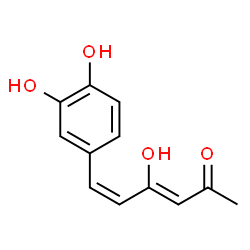| Description |
Hispolon, a polyphenol, can be isolated from Phellinus linteus. Hispolon possesses anticancer, antidiabetic, antioxidant, antiviral, hepatoprotective, anti-diabetic, and anti-inflammatory activities[1].
|
| Related Catalog |
|
| In Vitro |
Hispolon (25 and 50 μM, 24-72 h) inhibits cell viability of U87MG cells[2]. Hispolon (25 and 50 μM, 24, 48 h) induces G2/M cell cycle arrest and apoptosis in U87MG cells[2]. Hispolon (25 and 50 μM, 2-8 h) decreases the expression of G1–S transition-related protein cyclin D4 but increases the expression of CDK inhibitor p21[2]. Hispolon (25 and 50 μM, 24 h) inhibits the migration of U87MG cells[2]. Cell Viability Assay[2] Cell Line: U87MG cells Concentration: 25 and 50 μM Incubation Time: 24, 48, 72 h Result: Inhibited cell viability in a dose and time dependent way. Western Blot Analysis[2] Cell Line: U87MG cells Concentration: 25 and 50 μM Incubation Time: 2, 4, 8 h Result: Decreased cyclin D4 level, and increased p21 level.
|
| In Vivo |
Hispolon (2.5-10 mg/kg, i.p.) attenuates LPS-induced acute lung injury in mice[3]. Hispolon (5 and 10 mg/kg, s.c.) reduces tumor growth in DBTRG xenograft mice[4]. Animal Model: LPS-induced acute lung injury mice[3] Dosage: 2.5, 5 and 10 mg/kg Administration: Intraperitoneal injection (i.p.) Result: Alleviated the pathological effects in the LPS-challenged mouse. Reduced the W/D ratio in the lung and MPO activity. Decreased pro-Inflammatory cytokine production. Animal Model: DBTRG xenograft mice[4] Dosage: 5 and 10 mg/kg Administration: Subcutaneous injection (s.c.) Result: Reduced tumor volume (RTV). Inhibited GBM cell proliferation in vivo upon HE and ki-67 staining.
|
